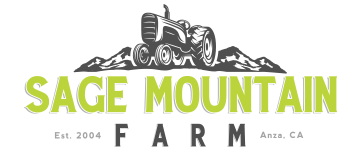Resources
Here are a few links
Healthy Links.
-
The World’s Healthiest Foods was established by George Mateljan to discover, develop and share scientifically proven information about the benefits of healthy eating, and to provide the personalized support individuals need to make eating The World’s Healthiest Foods enjoyable, easy, quick and affordable. The Foundation is not-for-profit so we can offer an independent perspective that is not influenced by commercial interests. Our only purpose is to help you discover the many joys and benefits of healthy eating. We believe that the Foundation’s independent perspective can help provide clear and easy-to-understand knowledge on how people of all ages and backgrounds can achieve and maintain their optimum physical, mental and emotional health and well-being.
-
Dr. Axe founded the website DrAxe.com, which is one the top natural health websites in the world today. Its main topics include nutrition, natural medicine, fitness, healthy recipes, home DIY remedies and trending health news. His website includes a group of credentialed editors, writers and a Medical Review Board.
-
A powerful search engine that helps you quickly find good food (local, sustainable, organic) at Farms, Markets, and Restaurants across the United States and Canada!
-
Select your state and time of the month in the dropdown menu and the NRDC (National Resource Defense Council) provides a list of local produce in season.
-
Use the interactive map at Epicurious to see what’s fresh in your area, plus find ingredient descriptions, shopping guides, recipes, and tips!
-
Learn how to make non-toxic cleaners for a healthier home!
Regenerative & Sustainable Resources.
-
Regenerative Agriculture is a system of farming principles and practices that increases biodiversity, enriches soils, improves watersheds, and enhances ecosystem services.
-
An information hub for all events, resources and news related to green living and sustainability in the beautiful city of Palm Springs.
-
An online green city guide created by a community of passionate members dedicated to living a sustainable lifestyle.
Our Suppliers.
-
The finest Certified Organic feed and suppllements (for your animals) on the the planet.
-
A supplier of organic fertilizer and Certified organic pest control products.
Directories.
-
World’s largest directory of eco-friendly, organic and holistic health resources.
Blogs.
-
Sage Mountain Farm CSA Member cooking up amazing CSA inspired Recipes and weekly Meal Plans.
-
BuenQamino
Sage Mountain Farm BLOG Writer and CSA Member brings you BuenQamino. A local Health-Conscious and Award Winning Gluten-Free Travel and Lifestyle Blog designed to inspire adventure and healthy living without limit. Find CSA Tips, Tricks and Recipes, Food & Product Reviews, Vlog and so much more!
-
A Naturopathic Doctor visits the De Luz Farm (our partner in the Inland Empire CSA).
-
Vegetarian Chef George’s log about world-class, sustainable, healthy and exceptional cuisine.
-
Let Taste of Pace cater your next event, teach you how to cook, and invite you to our Underground Dinner Parties!
Frequently Asked Questions
Yes! If you, or your group are interested in a tour please contact us so that we can schedule your guided tour which we offer once every season.
No. We are busy growing the freshest, most nutritious and flavorful organic produce on the the planet. We simply don’t have the time or manpower to welcome visitors properly.
However, we have a strong desire to connect with our community and to operate our farm under total transparency, so we offer tours of our farm once every season.
Yes. We sell our produce through the local farmers markets, and through our CSA (Community Assisted Agriculture) program.
CSA Program Frequently Asked Questions
Please visit the join page of our CSA website.
A typical box contains over a dozen fruits and vegetables .
Our CSA has more vegetables than fruit (just like the ideal human diet) but we do include some fruit.
Our most recent CSA box contained the following: Kale, Tatsoi (bagged), Collard Greens (Bagged), Spinach (bagged), Pac Choi, Broccoli Raab, Broccoli, Beets, Carrots, Radishes, Bunching Onions, Cantaloupe, Avocados, Loquats and Grapefruit.
The contents of your CSA box vary according to season (and other factors). For an idea of what may be contained in your CSA box each season.
The FULL PLEDGE box is 16″W X 19.5″L X 10.5″D.
The HALF PLEDGE box is 13″X X 13.5″L X 10.5″D.
The weight of the boxes generally varies according to the water content of the produce contained therein (a watermelon weighs a lot more than lettuce).
We have two pledge plans available for our CSA members. The Full Pledge, which typically provides a weeks supply of produce for a large family or 3-4 adults. With a Full Pledge, you would receive 10-15 items each week with the content varying by season.
For smaller families, we also offer a Half Pledge, which provides a weeks supply of produce for 1-2 adults. With a Half Pledge, you would receive fewer items and/or a smaller amount of an item.
Generally, the produce will be the same in each box, just different quantities.
Payment.
We request that all members pay in advance for their Full or Half Pledge. We ask this because we need to have an idea of how many families to plant for, keep our bookkeeping duties down to a minimum and be planting and harvesting your crops in a timely manner.
We also accept credit cards for payment.
Pickup locations.
Our current pickup locations are listed on the right sidebar of our Home page. As our CSA grows we will be adding additional locations in order to be more convenient for our members.
You can always cancel and skip a week provided you give us at least four days advance notice. We’ll then extend your pledge a week.
If you wish to pay by credit card we will only charge to it on your request. We never recharge a card without your consent. If for some reason you don’t wish to continue on after your trial period we delete your card info.
We accept all major credit cards, checks and cash of course.
Not at this time.
However, we are working hard towards being able to accept food stamps in the future, as we sincerely would like to be able to supply EBT clients with local fresh, nutritious, and organically foods.
Yes and no.
The majority of items on the Saturday email list will be the same for the weekday boxes. The problem is if we run out of a particular item during the weekend we will substitute something else that is similar.
Example: if we put kale in the weekend boxes and don’t have enough for the weekday boxes we may substitute Swiss Chard.
We make every effort to keep all the boxes as consistent as possible.
We do much better than that.
We publish a weekly newsletter that not only lists the contents of your CSA box, but offers suggestions (in the form of recipes) as to how to prepare the contents for your family.
Also included is news about the farms that supply our CSA, and other news and valuable resources.
Anyone can check out our CSA boxes at the Farmer’s market locations, if they choose to do so and if a box is still available (not picked up) for them to see.
Hint: It might be a good idea to arrive early (before the members pick up their boxes).
We don’t make extra boxes for display.
The every other week pledge is just an option to spread the number of boxes over a longer period of time. A 13 week every other week pledge will take 26 weeks to receive all of the boxes.
The difference between our CSA and a co-op is significant. A co-op generally will source it’s produce from all over. This may include producers from outside the USA as well. The co-op is generally able to provide produce that is currently “out of season” in Southern California.
Our CSA provides produce that is grown here locally. That means we are limited to the produce that grows here seasonally. We can’t provide you with a melon or tomatoes in December. The produce that goes into the boxes is whatever is available for harvest in a given week. We do a lot of greens over the winter as that is what will grow here. The boxes will change significantly from season to season, as the weather changes.




